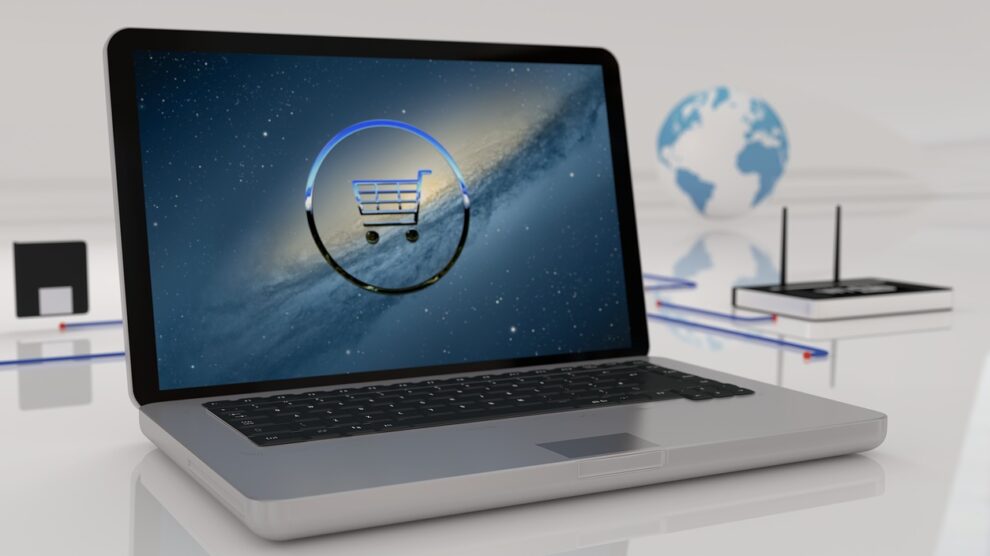Technology is transforming almost every area of modern life – and the way that ecommerce websites are designed and promoted is no different.
The idea of buying things online is relatively novel itself. Go back less than 20 years and less than 1% of retail sales were made online. Today, that figure is pushing towards 20%. But how exactly is technology changing the way we buy online and what can we expect moving forward?
1. Advertising
The first step in the online customer journey is finding a supplier. The most common route? Search engines.
Google dominates search worldwide with more than 90% of the user market share. The platform is constantly pushing the boundaries to revolutionise its offering, with machine learning currently being introduced to help small businesses target customers at this early stage.
Google’s responsive search ads are one such example. They’re a type of pay-per-click advert, allowing advertisers to appear at the top of the search engine results page. Typically, advertisers would need to go through a series of A/B tests to find the best fit for their audience. So, which headlines, descriptions and key phrases lead to the most conversions.

With responsive search ads, however, that testing is done for you. Advertisers can enter up to 15 headlines and four descriptions, which Google Ads then tests for you. Its machine learning technology will discover the best combination of up to three headlines and two descriptions, for different audiences and different queries.
That’s not the only way Google is using machine learning. They’re also developing sophisticated visual search capabilities. Customers will eventually be able to search using images rather than words. Machine learning tools will process the image to identify key objects and generate results that correspond to them. This could be hugely disruptive to SEO and ecommerce in a few years’ time.
2. Research
Technology is also changing the way consumers research when searching for a product or supplier – and how merchants respond to them. According to Sprout Social, the vast majority of messages requiring a response are ignored by brands. That’s a lot of potential customers being lost.
Chatbots fill this void, using artificial intelligence to assist site visitors with their queries. Whether it’s a product search or a query about a specific order, chatbots can provide a human-like response, without users even realising they’re speaking to AI. On top of all that, they’re available around the clock, 365 days a year.
The less advanced chatbots, which are used to greet visitors and offer help before forwarding their query onto a staff member, have become a common feature on ecommerce sites. However, they are now becoming far more advanced as the technology improves.
Modern chatbots can recognise the typing patterns of customers and adjust their tone accordingly. They can identify key phrases and direct visitors to the right page, and even store details of each visitor, recommending relevant products based on purchase history, for instance.
Want to get on board? You’re not alone. Oracle found that 80% of businesses already use chatbots or plan to do so by 2020.
If you’d like to try out a chatbot for yourself, check out Louis Vuitton’s.

3. Payment
The way we pay for goods online is also being transformed by technology. Both buyers and sellers are becoming more aware of the benefits of digital currencies like Bitcoin.
Launched in 2009, Bitcoin is a cryptocurrency which is managed by a blockchain network. This makes it more secure because no one person has all information about a transaction, but also much quicker as there is no need for a bank to act as a ‘middle man’.
For ecommerce, that means instant payments removing the delay between payments being sent and products being shipped out. In a world where consumers expect next-day or even same-day shipping, this could be hugely beneficial. It also reduces costs, with no fees for paying or receiving funds, and increases security.
4. Biometrics
One of the biggest challenges for ecommerce merchants is getting customers to keep coming back. To do so, they need to make it as easy as possible for them to return and buy again.
The solution? Allowing customers to create an account seems like a good option. This way, sellers can track what they buy and provide a more personalised user experience, as well as offering loyalty bonuses and incentives to regular customers.
Unfortunately, account creation has two central problems – ease and security. Remembering a username, password and potentially even a security question is a big ask from customers when they have to do the same for countless other sites. Not to mention how easy it has become for hackers to access these details and gain access to the customer’s account and payment details.
That’s where biometrics comes in. This is the use of physical characteristics to identify and grant access. Is it possible for ecommerce? Increasingly so. Mobile commerce now accounts for over half of all ecommerce transactions in the UK, while most new mobile phone models are equipped with fingerprint readers.
Using biometrics for mobile ecommerce will make it quicker, easier and more secure for consumers. For sellers, this extra speed and security could give them the edge and result in more returning customers.
5. Virtual and augmented reality
One particularly exciting development for ecommerce concerns virtual reality (VR) and augmented reality (AR). Virtual reality transports users to virtual surroundings, where their movements are mimicked in a first-person view. So, for instance look to the left, and you will see what’s on the left side of your virtual surroundings.
It’s becoming increasingly popular for gaming, as it provides the most immersive action-packed experience. However, it can also be used to create virtual showrooms in ecommerce. Consumers would have the chance to visualise a product in a more realistic environment before buying it. That way, they can get a better idea of what it actually looks like – from the comfort of their own home or office.
This goes a step further with AR, which adds virtual elements to a user’s live surroundings. Rather than being transported to a completely virtual environment, consumers can see digital components in situ. Again, it’s most popular in gaming, with Pokémon Go taking the world by storm in 2016 – projecting digital characters onto a real-world map based on each user’s location.
In ecommerce, this could mean seeing a piece of art or furniture in your home – or even clothing on your body – without having to purchase or transport anything. It adds a ‘try before you buy’ aspect which, so far, ecommerce has struggled to re-create.
For some, this is the only remaining advantage of shopping in brick and mortar stores. If ecommerce can replicate it using technology, what will be left to stop online shopping taking over completely?





